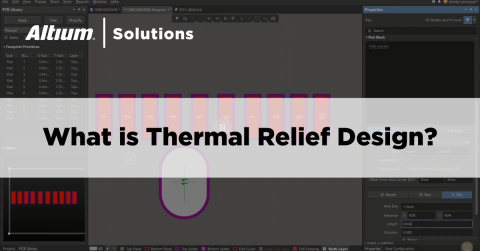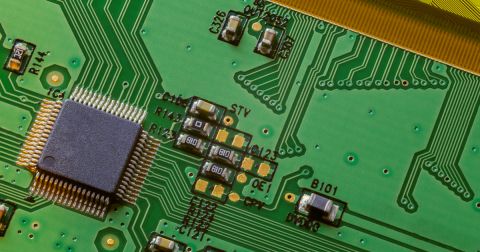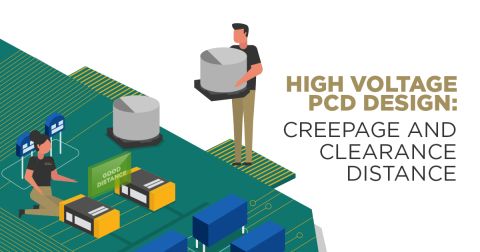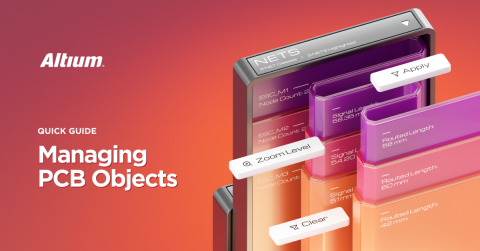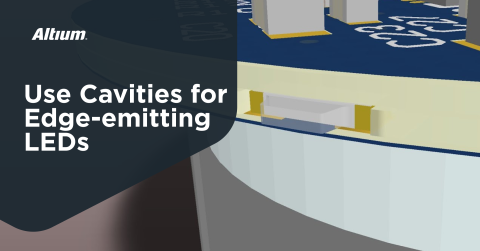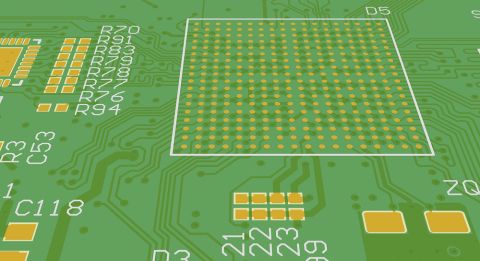Design Aerospace PCBs to Meet FAA Aircraft Certification Standards

Avionics and aerospace engineers face a strictly regulated landscape when designing civil aircraft and the electronic systems that support them. You don’t have to be a professional aviation engineer to know that aircraft are extremely complicated mechanical and electrical systems. From withstanding extreme environments to rugged electrical and mechanical requirements, the Federal Aviation Administration defines standards for every aspect of aircraft design.
Embedded systems in aircraft and electrical connectors are two areas where designers can take major steps to ensure reliability. Electronics designers need the best layout, sourcing, verification, and documentation tools to help ensure they will receive certification for airworthiness. Designing to these standards, sourcing compliant components for your system, planning for production, and documenting the totality of your circuit boards takes the complete set of design tools you’ll find in Altium Designer.
ALTIUM DESIGNER®
The only PCB design application that unifies design, documentation, and sourcing tasks in a unified design environment.
Every PCB needs to meet critical quality and performance requirements, especially for products in highly regulated industries. Components must also meet important quality and reliability standards. If you’re designing avionics systems for civilian aircraft, then you’ll need to become intimately familiar with FAA standards on avionics systems.
The FAA aircraft certification standards define all aspects of mechanical, electronic, and operator requirements on civilian aircraft. Designing to these standards and IPC reliability standards takes the right set of design and manufacturing preparation tools. If you can address these aspects of your design early, you can ensure your new product will be manufacturable and reliable once deployed in a new aircraft.
Electronics are getting more complex at breakneck speeds, but avionics designers can keep up with new technology and create advanced designs for new aircraft. With the complete set of design features in Altium Designer, you can create your embedded systems and source reliable components for aircraft in a single program. Here’s how Altium Designer helps you stay productive and comply with FAA aircraft certification standards.

Access all the features you need to design advanced PCB design and layout in Altium Designer.
FAA Certification Standards for Aerospace PCBs
IPC standards should always be looming at the forefront of your design strategy. However, embedded systems for aircraft and other aerospace systems may need to be designed to meet FAA guidelines or MIL standards. In order to receive the qualification, the FAA needs assurances your systems can withstand potential power fluctuations, operate within steady-state tolerances, and manage thermal demands. If your new design can pass a battery of tests, the aircraft it’s deployed in can receive an airworthiness certificate.
Some of the important industry standards on your next product will need to comply with include:
- Power requirements defined in the CBEMA curve
- AS9001 quality tracking requirements
- IPC Class 3 or 3A design and manufacturing requirements
- EMC requirements specified by FCC
- CISPR standards specified by IEC
- MIL standards for circuit boards in mission-critical military aircraft
- Other standards, including ISO, IPC, SAE, and RTCA DO
These systems must be designed to provide the highest performance in extreme environments. Whether you’re designing civil aircraft, ultralight aircraft, or light-sport aircraft, the FAA Aircraft Certification Service will rigorously evaluate your designs within these systems to ensure airworthiness. This includes the evaluation of any embedded systems in new aircraft.
Designing Embedded Systems in Aircraft to Comply with Industry Standards
As electronics in aircraft are usually part of larger embedded systems, you’ll need to consider your board’s place within a power system, control system, communications system, or electromechanical system. Managing the huge range of design rules and standards on your embedded circuit board designs and mission-critical systems takes adaptable design software for advanced PCBs.
Each of these systems carries its own performance and design standards, and you need to encode these standards as design rules within your PCB design software. Working with rules-driven design software allows you to incorporate circuit board layout requirements directly into your design rules. The right design software can help engineers keep track of their circuit board layouts, components, and sourcing, ensuring their boards meet reliability and quality standards.
- Embedded systems for aircraft may need high-speed processors, and your design tools should help you locate the MCU, FPGA, or other processors you need.
Learn more about selecting an MCU for your next embedded system.
- Aircraft can be electrically noisy environments, and your mission-critical PCBs need to be designed with signal integrity in mind to suppress unwanted noise in your circuit board.
Learn more about signal integrity in your high-speed design.
- Embedded systems in aircraft also need to be designed to withstand thermal demands to ensure reliability and to comply with important IPC standards.
Learn about designing to IPC standards for thermal management.

High-speed layout near a BGA for embedded devices in Altium Designer.
Ensure Reliability with the Right Connectors
Any IPC Class 3/3A system needs to be designed to have high mechanical and electrical reliability, especially in rugged environments. Sourcing unique components can be difficult, including radiofrequency modules, rugged connectors, and specialty aircraft wiring. Component sourcing and data management are two critical processes for the aviation and aerospace industry, but preparing complete documentation helps you prove compliance in an instant.
When you need to quickly place connectors in your circuit board, your aircraft connectors should be available inside your design software. These components need to be rated to industry standards to ensure reliability. You need instant access to datasheets, PCB footprints, and much more for your next circuit board layout.
Find the Aircraft Connectors You Need in Altium Designer
You can easily narrow down the components you need when you have access to supply chain data from verified distributors. You’ll have greater control over your design when you have visibility into lead times, costs, and lifecycles from compliant distributors. Working with the right design software also allows you to instantly import component models for your aircraft electrical connectors and cable assemblies for use in your circuit board layout.
When these sourcing features interface directly with your design tools, you can import your component models directly into your layout and your PCB assembly documentation. Altium Designer provides these functions through the Manufacturer Part Search Panel, allowing you to find and import the components you need, including rugged aircraft connectors.
- According to FAA requirements, you’ll need to track and audit your supply chain. Altium Designer is the only PCB design platform that gives you complete supply chain visibility to ensure compliance and reliability.
See how real-time supply chain information aids compliance and improves quality.
- Many aerospace PCBs are part of a larger multi-board system. Selecting the right connectors helps ensure signal integrity and mechanical reliability.
- Whether you work for the military or civil aviation industry, you’ll need to implement best practices for managing your design data, including sourcing information for electrical connectors.
Learn more about design data management with the right design software.
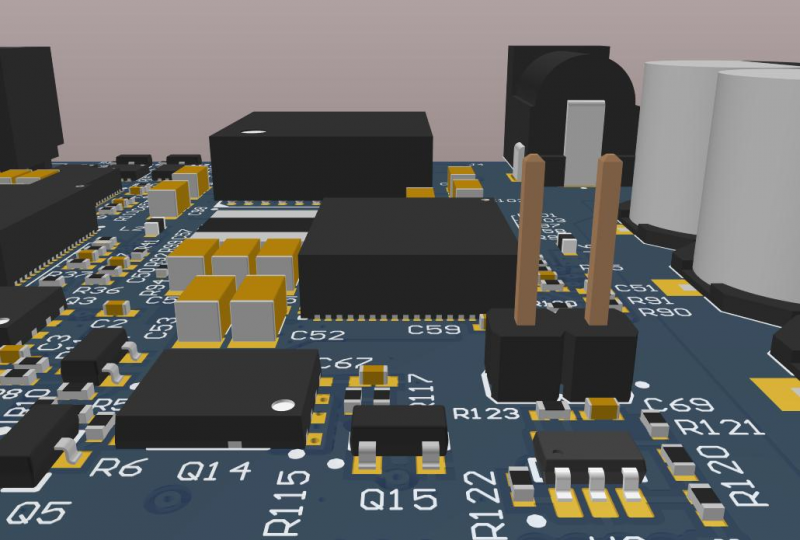
3D view of components and connectors in Altium Designer.
The Right Design Tools for Embedded Systems in Aircraft
Embedded systems are vital in aircraft, and they will continue to become more vital in other industries like automotive and industrial automation. To keep up with the pace of technology and source reliable components, designers need a complete circuit board design solution. This means working with design software that includes all the design features you need in a unified, rules-driven design interface. Everything from thermal pad design to ground planes needs to be carefully designed and checked to ensure reliability.
The best design software for real-time embedded systems development helps you stay compliant with industry standards and create highly accurate layouts. Aircraft safety and performance in mission-critical systems hinges on these systems being designed to meet or exceed every electronics design standard. When you can define industry standards as design rules for your PCB layout, you have the highest chance of ensuring reliability and qualification.
Altium Designer: A Single Program for All Your Designs
Working within stringent design standards and sourcing regulations on mission-critical systems takes real integration in your design software. With Altium Designer, your circuit board layout editor, schematic editor, mechanical design features, documentation, verification, and sourcing features exist in a single program. The power of Altium Designer lies in its rules-driven design engine, ensuring you can stay compliant and build reliable PCBs in a single software application.
When you’re ready to have your embedded devices prepared for PCB manufacturing, you can instantly generate testing documentation, fabrication drawings, and bills of materials for your circuit board. Every design feature in Altium Designer is created to share your design data, helping you stay productive in all aerospace PCB design tasks.
- Whether you’re designing simple 2-layer boards or complex embedded systems for aircraft, you’ll have access to everything you need for advanced PCB design in Altium Designer.
Learn more about Altium Designer's unified environment for embedded systems design.
- Other design software platforms force you to use external programs to write embedded applications for FPGAs or MCUs. With the embedded design tools in Altium Designer, you can develop embedded software for FPGAs and build your PCB in a single program.
See how you can develop embedded software for FPGA applications in Altium Designer.
- ECAD and MCAD co-design features in Altium Designer help you accurately place aircraft electrical connectors and verify your layout in 3D.

Create high-quality circuit board layouts for embedded devices in Altium Designer
Altium Designer has set a new standard for the PCB design software industry. With everything you need integrated into a single program, you’ll have full control over your embedded design and sourcing strategy while working in a rules-driven design environment. Make the switch to Altium Designer today.

